Flower Glossary is reader-supported. When you buy through links on our site, we may earn an affiliate commission.
Bonsai trees are very popular, with plenty of meaning and artistic value, which is what has made them become so culturally significant throughout history. They are essentially a living tree or shrub, which has been grown so that it has the appearance of a full-sized mature tree, but in miniature.
It’s important to remember that a bonsai is not a species of tree, as many different species of tree can be turned into a bonsai tree. Bonsai is simply the art and technique through which these trees are turned into miniature full-grown versions of themselves.
This means that there are plenty of different types of bonsai trees, all of them with different significant meanings and symbols attached. Let’s get right into it!
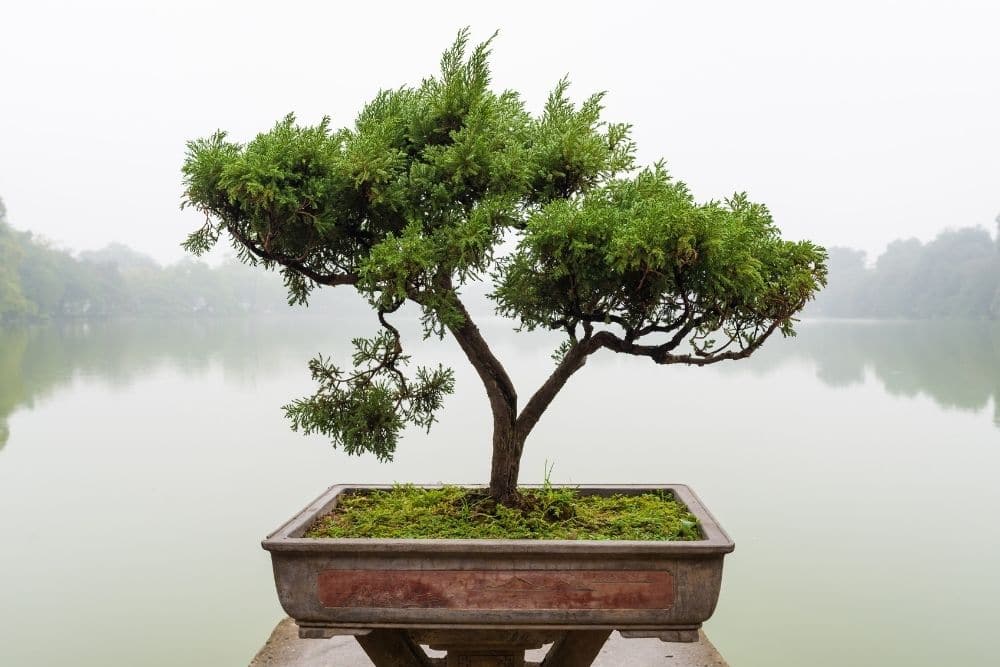
Table of Contents
What is the meaning of a Bonsai Tree?
Bonsai is an ancient art that dates back centuries ago, and it is the art of utilizing different horticulture techniques in order to create miniature versions of trees. So they will have the appearance of a fully grown and matured tree, but they will be small enough to fit into a small ceramic pot.
This art is a deeply sacred practice, which holds great significance within Japanese culture. However, the art itself was inspired by the Chinese art of penjing, which is a form of pot landscape. The Japanese adopted it and turned it into a more minimalist version, and it has developed into what we know it as today.
Bonsai trees are a symbol of harmony, above all. However, they also represent peace, order, and balance. They symbolize everything that is good in nature, and the order of thoughts, and they are used to create an environment of peace and reflection.
The art of Bonsai, culturally, is also used to communicate different ideas and to represent different emotions, through all the different symbols that different Bonsai trees harbor.
Everything about the Bonsai tree revolves around the overall aesthetic and appearance, and the gardener does not just take care of the plant, the gardener is an artist that shapes the message of the plant.
Every single shape and leaf can contribute to the overall symbology of the Bonsai tree, and as such, great care and dedication are put into them.
Although Bonsai trees as a whole represent harmony, balance, and peace, each different Bonsai tree will have its own unique symbology and message.
This is also why placing certain different Bonsai trees together can create a more complex message or symbol, and there are entire gardens dedicated to Bonsai trees, carefully placed and curated.
But let’s move on to take a look at the symbology and meaning of some of the most common Bonsai trees so that you have a good basic understanding.
The Meaning and Symbolism of Common Bonsai Trees
As we’ve mentioned, Bonsai trees represent harmony, balance, peace, and order. But as there are many different types of Bonsai trees, each individual type of Bonsai tree also has its own symbology and meaning.
Here are some of the most common Bonsai trees which you might come across, and what they mean:
Azalea Bonsai:
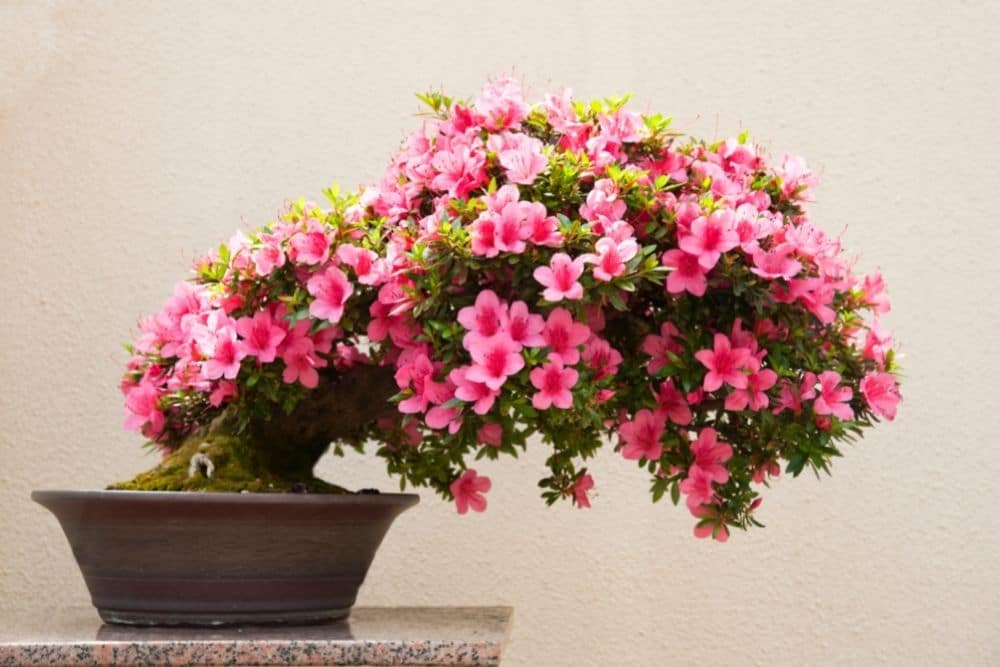
The Azalea Bonsai is a miniature version of the tree, with regular-sized flowers which make them look huge. They are beautiful and vibrant, in a pink, white, or red color.
This Bonsai tree is a symbol of femininity, and as such, it is gifted or displayed during holidays and festivities devoted to women. It represents beauty, abundance, and love.
It is also used to express emotional vulnerability and is a great gift for loved ones. Plus, it can be gifted to express an abundance of wealth, beauty, or intelligence.
Boxwood Bonsai:
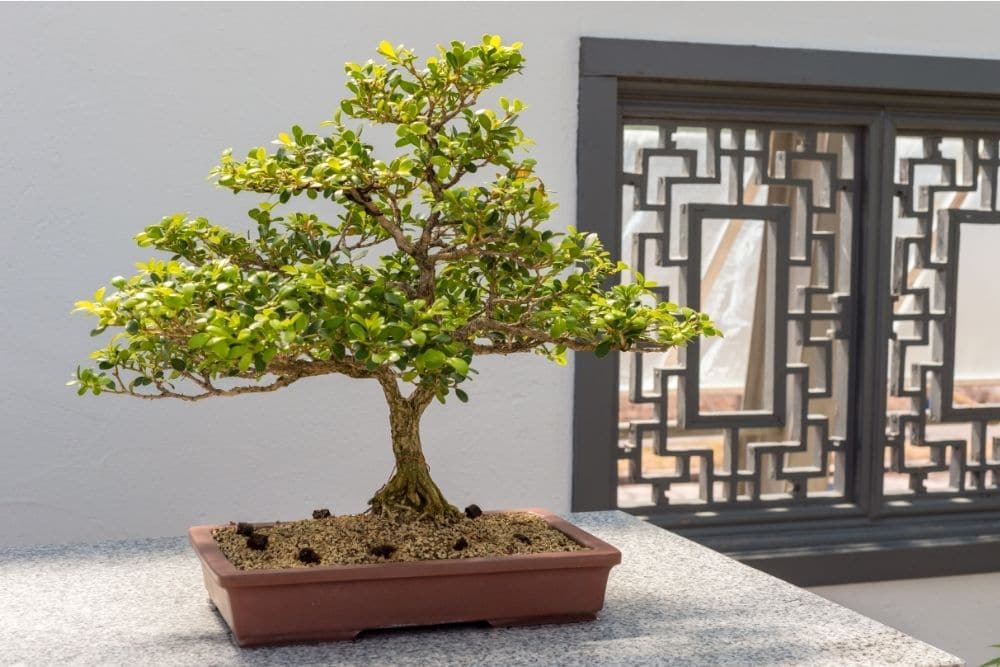
Boxwood is an evergreen tree, native to Western Europe, North Africa, and West Asia. The Bonsai of this tree is minimalist and subtle, but it’s a beautiful deep green all year round.
This Bonsai tree is a symbol of immortality, thanks to its evergreen and non-dying leaves. It is also thanks to its extra slow growth and longevity.
The tree’s wood was traditionally used by Christians and Romans for shelter, so it can also be a representation of perseverance and faith.
Cedar Bonsai:
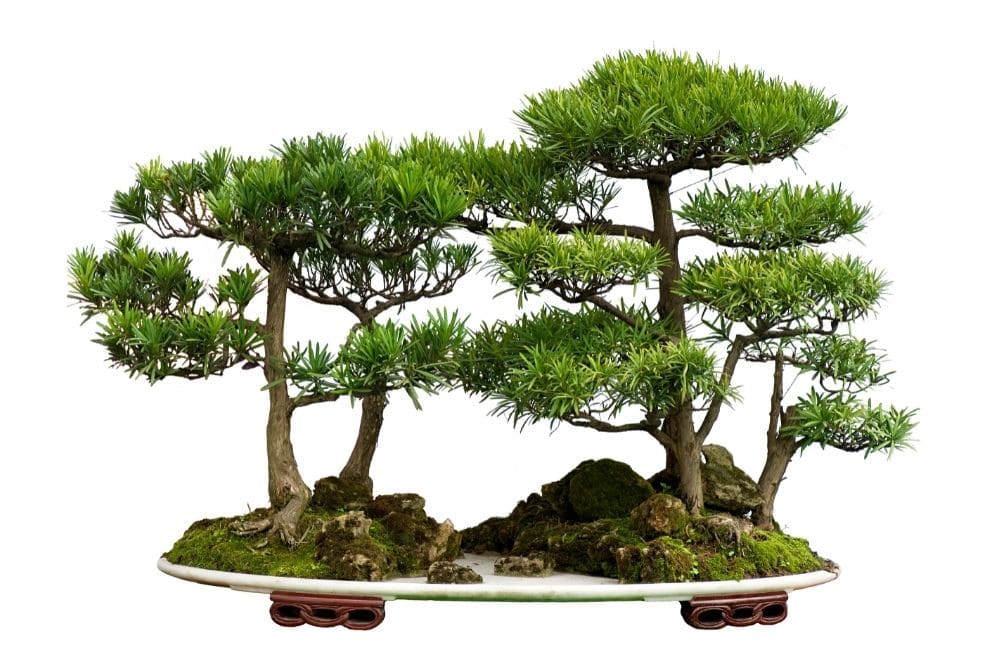
Cedar trees are significant in many different cultures, but especially in Native American tribes, as they were used as a ceremonial purifying plant, for incense and herbs.
The Bonsai version of this tree symbolizes a few different things. It means immortality, due to the way in which the tree points upwards, to the heavens.
It also represents protection, due to its use as a medicinal plant, and the way in which it has been used in many cultures for purifying or repelling evil spirits. Plus, it can also represent strength thanks to its size and longevity.
Cherry Blossom Bonsai:
Cherry Blossom trees are native to Asia, and they produce the delicate and iconic pink flowers, which has made them popular worldwide. It is Japan’s national flower and has great cultural significance, so it is no wonder that as a Bonsai it is considered amongst the most sacred.
This Bonsai tree symbolizes female beauty and strength, as well as representing rebirth and renewal, as the flower will bloom every spring, year after year.
This Bonsai tree also symbolizes mortality and the significance of human existence. It is a Bonsai of reflection and mindfulness, to appreciate life in the present.
Chinese Elm Bonsai:
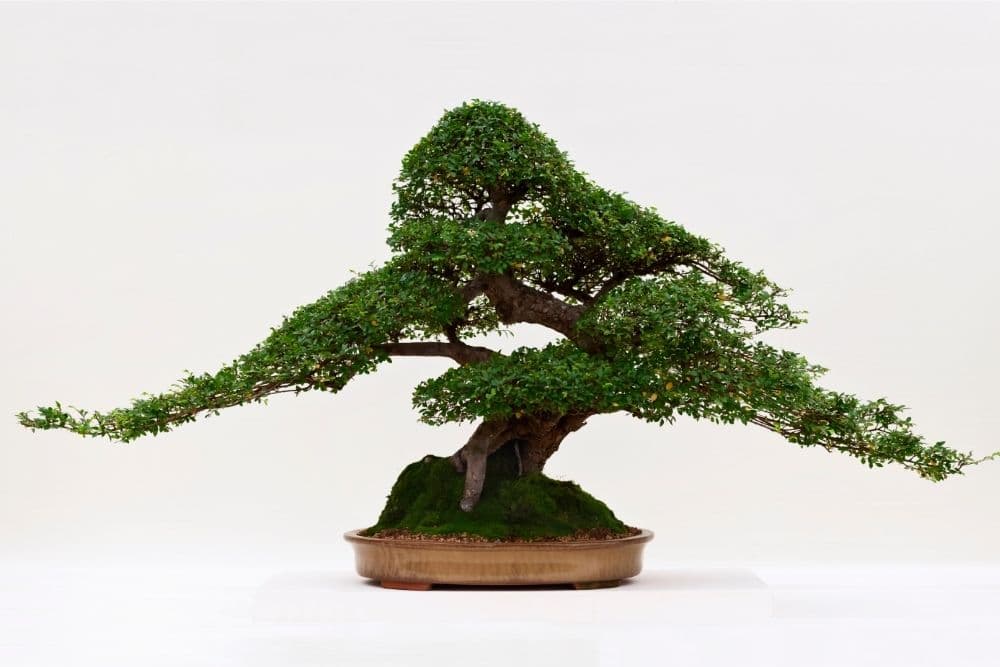
The Chinese Elm tree grows to be pretty tall but has small leaves. So the Bonsai version evens out the proportions and makes it into something beautiful and aesthetic.
This Bonsai tree symbolizes harmony, and it is used to enhance wisdom, inner strength, and intuition. It can often be gifted to those in need of guidance, or those going through conflict. However, it can also represent love, in its most balanced and peaceful state.
Ficus Bonsai:
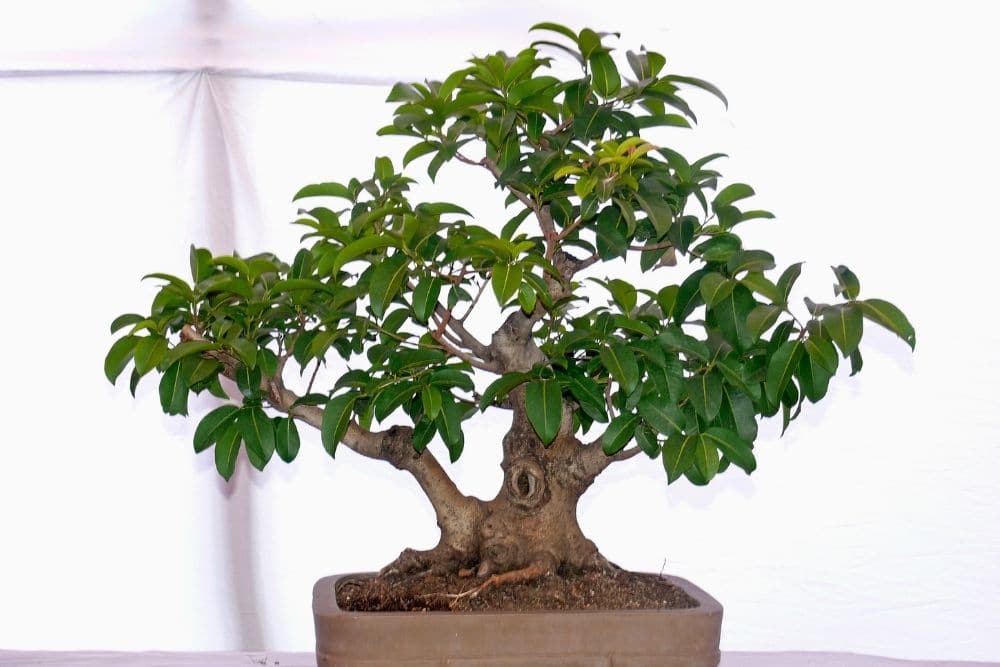
This is one of the most popular options for those wanting to grow a Bonsai tree indoors, and it is also one of the most unique looking thanks to the branches, which seem to string together.
This Bonsai tree symbolizes unity, and it is often used to convey universal understanding. It also represents abundance and new beginnings. Overall, it is a cheerful symbol, ideal for bringing people together.
Jade Bonsai:
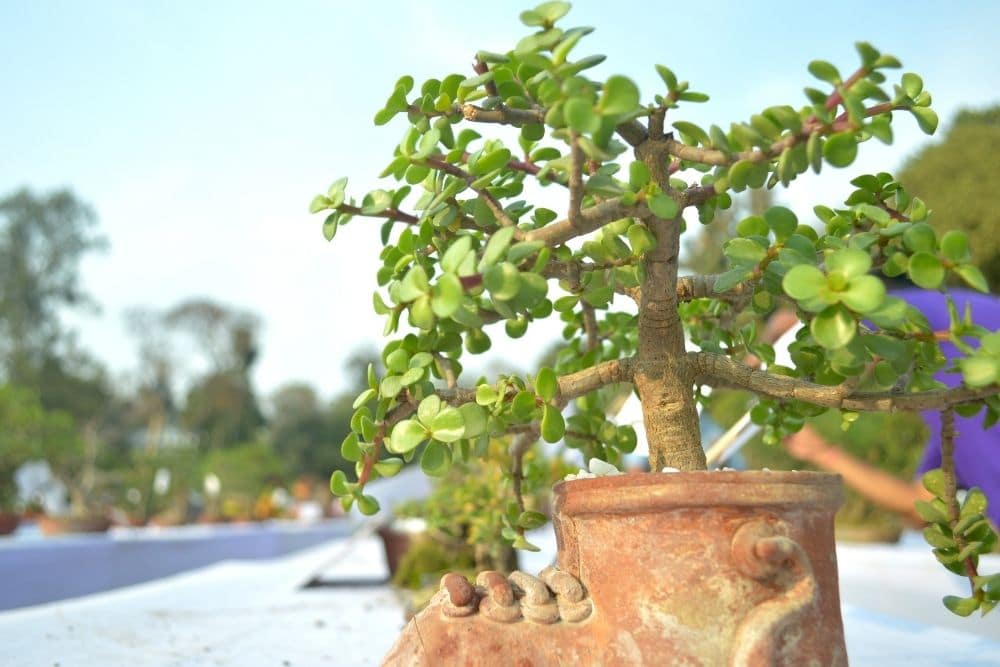
The Jade plant is succulent, so this Bonsai tree is quite small in size and amongst the easiest to take care of, which makes it quite a popular choice.
It symbolizes wealth and prosperity, due to the leaves which resemble Jade coins. However, it also represents good luck and friendship, and it is all about positive energies and good vibes.
Maple Bonsai:
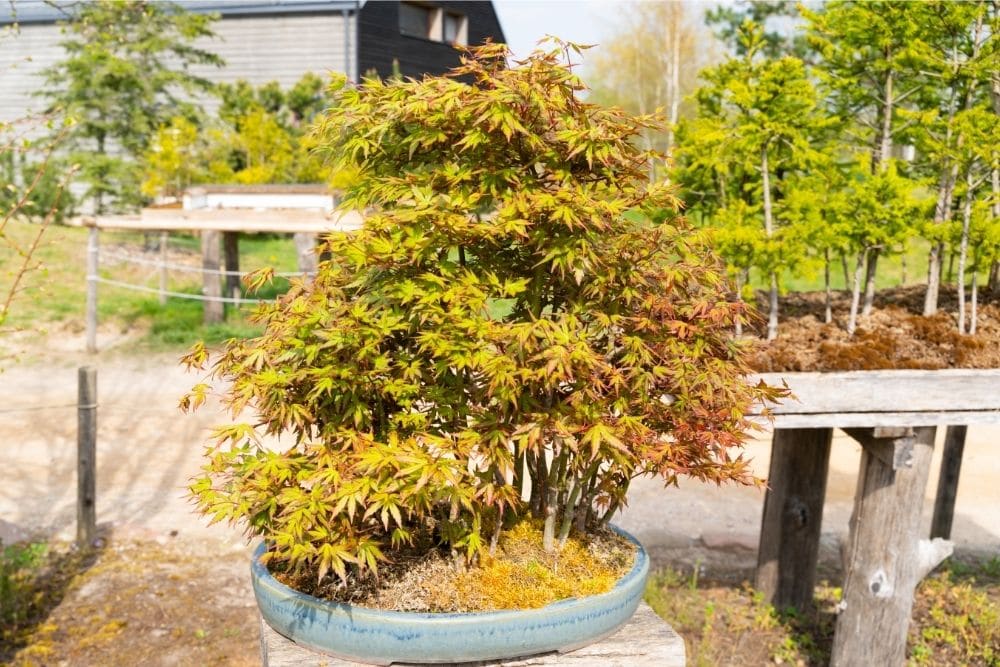
The Japanese Maple tree is unique thanks to its bright red leaves, and it has a big cultural significance within Japan. The Bonsai version is considered to be one of the most beautiful, and great care is put into its appearance.
It symbolizes peace and serenity, representing balance amongst the different elements. However, it is also an important symbol of beauty and refined elegance, thanks to the expanding branches and the red leaves.
In Conclusion
In conclusion, every single Bonsai tree has its own significance and meaning, and it will largely depend on the symbology surrounding the original version of the tree that the Bonsai is made out of.
But on the whole, all Bonsais are meant to convey peace and tranquility, and the care put into them turns them into a sacred form of art, which is hugely respected.
